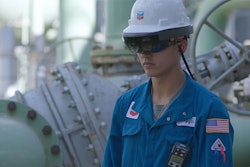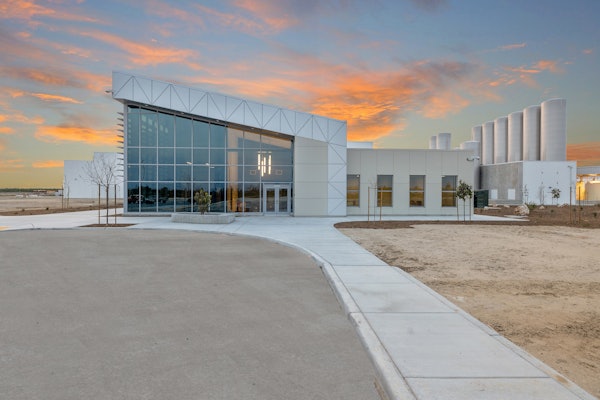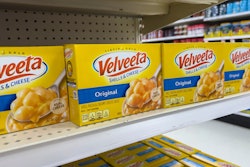Digital twin is a term often bandied about around increasingly digital industrial environments. Though its definition has been interpreted in a number of different ways, there’s little debate about the benefits that manufacturers can achieve throughout the production lifecycle. Providing a virtual representation of a physical asset, a digital twin provides all kinds of opportunities to understand how assets will perform—during production or before a machine is even built.
“It’s really the underlying physics of how everything works and how you can use that as a technology to predict a whole range of variables for how things are going to perform,” said Graham Jackson, engineering specialist for Maplesoft.
“It could be a digital twin to a machine, a process or a plant, tying it to the digital twin of the automation,” noted John DeTellem, product marketing manager for Siemens. Instead of testing everything in the real world, he added, a digital twin enables you to avoid the risk of crashes or damages associated with incorrect process parameters.
Jackson and DeTellem joined David Greenfield, director of content/editor in chief for Automation World, on the stage at the recent Automation World Conference & Expo in Chicago to help clarify the possibilities available with digital twin technology and the best way to get started.
Virtual commissioning is a key value of digital twin technology, DeTellem and Jackson agreed. Contrary to traditional commissioning, virtual technology enables engineers and operators to connect to a machine’s mechanical design before the machine is even being built, DeTellem noted. “You can see what is going to be possible with the equipment before you even start to build the machine.”
>>Learn how Burr Oak Tool is using real-world PLC data to create a digital twin that reduces time to market by four to six weeks.
Maplesoft combines its MapleSim modeling and simulation tool with B&R’s Automation Studio to help customers with their virtual commissioning strategy. With this, the digital twin is treated as a series of inputs and outputs, Jackson said, and it becomes a virtual test bed to test against a physics-based model. “There are a whole bunch of benefits,” he said, pointing in particular to the ability to see what requirements the equipment will and won’t meet. “For us, it’s a very natural extension to have a digital twin at your disposal.”
>>Read more about virtual commissioning in our feature, “Digital Twin Makes Virtual Commissioning a Reality.”
Getting started
Open connectivity is a key first step for getting a digital twin started in your operations, DeTellem said. “The next step is to map the signals—the inputs and outputs coming from the processes of the machine—and map those to the digital twin of the CAD model.” Siemens NX software helps to realize the digital twin all the way from concept design through engineering and manufacturing. Plant Simulation creates digital models of the plant, modeling the mechanical and then tying it to the automation, DeTellem added.
The CAD data is an easy way to get started, Jackson noted. “A digital twin can be as simple as a multi-bodied model,” he said. “If you want to take that further, you can bring that alive by adding in physics-based components.”
The more information you can include from your components, the more specificity you can add to the model itself, Jackson continued. “You need to get enough detail to match the expectations of what you’re looking to get out,” he said. In a motor sizing example, a digital twin could be used to calculate a variety of torques and forces. “You’re trying to use the information you have available and then adding layers of fidelity as you iterate.”
What information you need depends on where you’re at currently, Jackson added. If you’re in the design or prototype stage of a machine, for example, you will likely not have any sensor data related to performance and will instead rely on CAD data. Conversely, if the machine has been working for a couple years and isn’t working as well as it used to, you might want to compare sensor data to the ideal digital twin. “There’s a lot of flexibility in what you can input to create a digital twin,” he said.
You can also start small and scale up, DeTellem noted. “That’s one of the highlights that we try to help end users and OEMs recognize,” he said. “There are methods to start small, show huge benefits and then scale up.” The benefits can be large. But starting small—finding one error and fixing that—is likely a more practical strategy to begin with.
Continued possibilities
Beyond virtual commissioning, digital twin technology provides the opportunity to continue to update the model and evolve it over time. “It becomes a constant tool they can go back to—the digital twin of performance,” DeTellem said. “It’s validating actual performance of the line against the design.”
It’s important for end users to figure out where they might most benefit from the technology, Jackson emphasized. “As you start thinking about digital twin technology, it really just means a functional model of some product or technology. It’s worth trying to understand what is it that you would benefit from by having an accurate model of performance,” he said. “Some folks are modeling sequencing across an entire line. Other folks are very interested in the design parameters of a specific machine.”



















